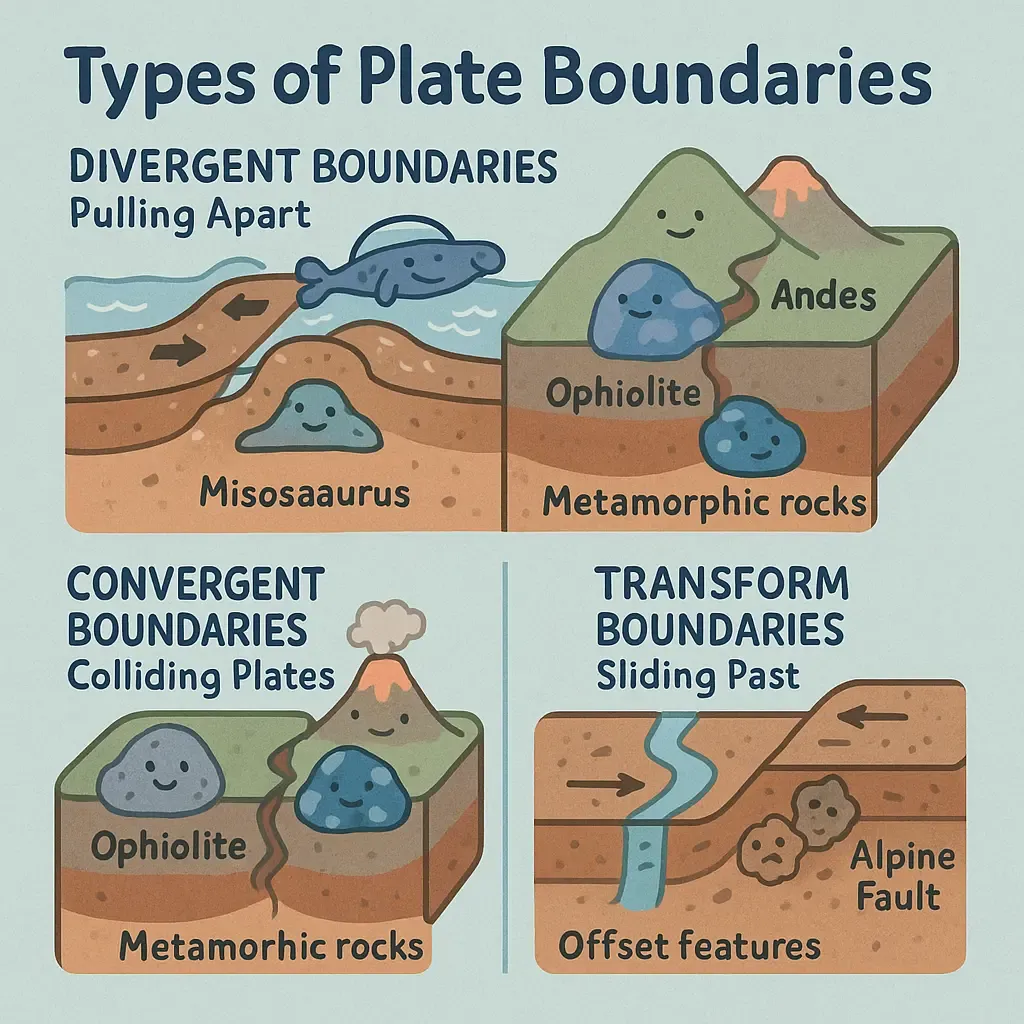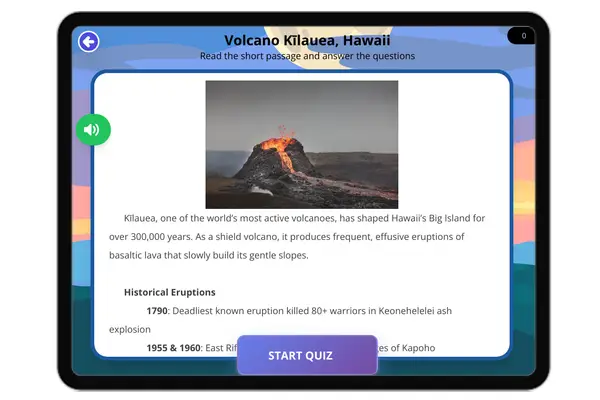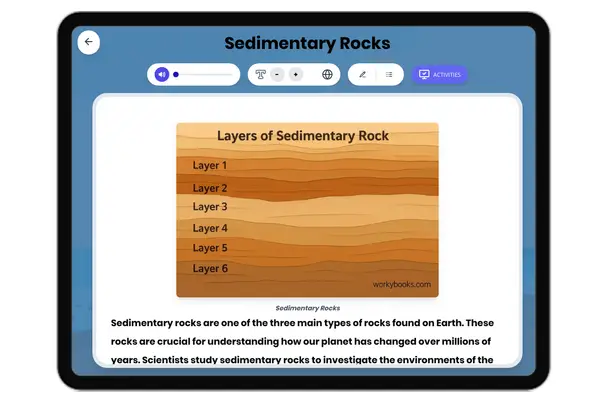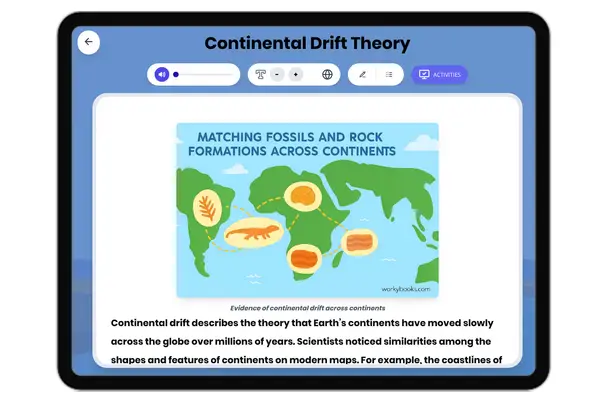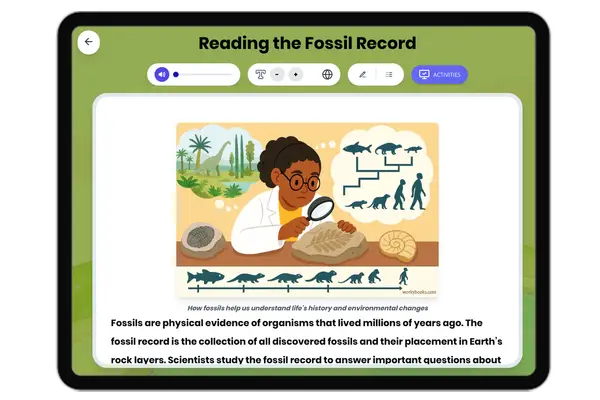Types of Plate Boundaries — Reading Comprehension
Grades
- 5
- 6
- 7
- 8
Standards
- MS-ESS2-3
- RI.6.1
- RI.7.4
- RI.8.2
PRINT+DIGITAL RESOURCE
This learning resource is available in interactive and printable formats. The interactive worksheet can be played online and assigned to students. The Printable PDF version can be downloaded and printed for completion by hand.
About This Reader
This science passage explores how geologists use rock formations, fossil distributions, and seafloor structures to identify three types of plate boundaries: divergent (mid-ocean ridges with pillow basalts), convergent (subduction zones with ophiolites), and transform (fault lines with offset features). The text highlights key evidence like magnetic stripes in seafloor rocks, marine fossils atop mountains, and matching fossil distributions across continents. Aligned with NGSS MS-ESS2-3 (analyzing rock/fossil data as evidence of plate motions), it demonstrates how scientists reconstruct ancient plate movements through observable phenomena. The passage includes real-world examples like the Mid-Atlantic Ridge, Andes Mountains, and San Andreas Fault, while explaining geological concepts such as subduction, seafloor spreading, and continental drift. Perfect for middle school earth science units covering Earth's systems and plate tectonics, it supports reading informational text standards focusing on key details and evidence-based interpretation.
Perfect For:
👩🏫 Teachers
- • Reading comprehension practice
- • Auto-graded assessments
- • Literacy skill development
👨👩👧👦 Parents
- • Reading practice at home
- • Comprehension improvement
- • Educational reading time
🏠 Homeschoolers
- • Reading curriculum support
- • Independent reading practice
- • Progress monitoring
Reading Features:
📖
Reading Passage
Engaging fiction or nonfiction text
❓
Comprehension Quiz
Auto-graded questions
📊
Instant Feedback
Immediate results and scoring
📄
Printable Version
Download for offline reading
🔊
Read Aloud
Voice-over with word highlighting



